Encountering the special wildlife of Scotland’s far north
Part 2 of a walking trip on the eastern part of the North Coast 500
Hello and welcome. The weather has returned to the cold, wet, grey conditions that are not uncommon in Scotland during lambing time, but I am still reliving the glorious fortnight of weather we had during my trip earlier in April.
Last week I wrote about the culture and history of the Highlands north of Inverness, which I had just visited, in Exploring the harsh heritage of Scotland’s far north (the eastern seaboard of Easter Ross, Sutherland and Caithness). This week I am focussing on the distinctive nature of this area and some of the species I encountered.
If reading this post by email, it may be truncated by your provider as it is fairly long. If so, you’ll need to click through to the website to view all the text and images.
Morvern and Maiden Pap
The furthest north I went on this trip was to Dunbeath, from where I drove across moorland to the end of the little road up Berriedale. The walk up these pointy hills began at the end of the public road, where tracks continue across Braemore Estate.
I made an early start, knowing it would be a long day, covering 11 miles (17km) and over 3,000ft (925m) of climbing. My route began past bright green improved pastures around the buildings and woodland plantations of the estate. Rather than sheep, these fields held a scattering of pairs of greylag geese, feeding up on the lush grass before finding wilder spots to nest.
There were also curlew in the fields here and on the marshy flats a few miles up the river, but remarkably few other birds. Maybe it was too early for them to be moving inland to their breeding grounds. I did, however, see numerous frogs as I tramped across the boggy moorland and, on the very summit of Maiden Pap, I disturbed a common lizard sunning itself. I managed to capture it on my phone before it scuttled away between the heather stems, which it resembled.
On Morvern, I caught a glimpse of an unidentified darkish butterfly (possibly a small tortoiseshell or peacock). It reminded me of when I had originally researched this walk. That was in June and I had been fascinated all the way up by brown butterflies descending from the sky. They were so flighty it took me a while to identify them. Most appeared to be painted ladies with a few red admirals mixed in. My guess was that they were using the fine weather and easterly wind to migrate from the continent and that Morvern, the highest hill in Caithness, served as their lighthouse.
Geologically, these steep, pyramidal hills are interesting. They are composed of a tremendously rough type of Old Red Sandstone that forms bouldery screes on their flanks. This is ‘pudding stone’, a conglomerate embedded with pebbles eroded from older mountains. Harder outcrops project as tors from the summit ridges of these hills. The descent from Maiden Pap is down a steep gully that would be a rock climb, were it not filled with peat and woodrush into which steps have been eroded.
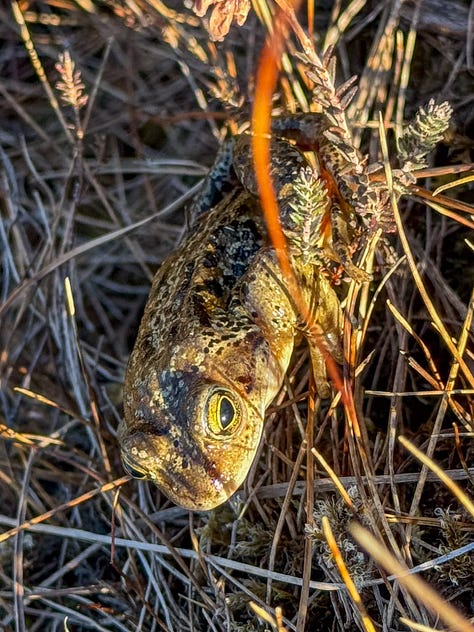
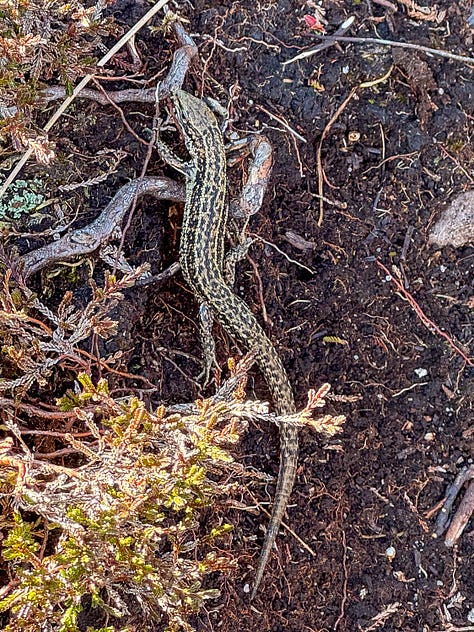
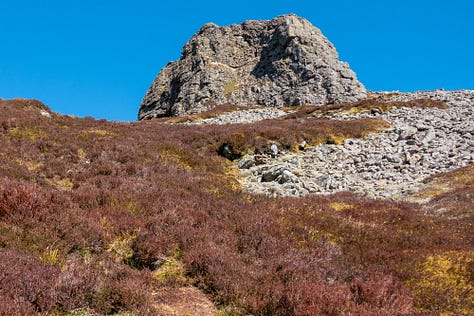
Big Burn Walk, Golspie
My walk up Ben Bhraggie to the enormous statue of the Duke of Sutherland, started up a popular local walk. Big Burn is not that large now, but when the glaciers were melting it carved a deep gorge through the rocks. A delightful path weaves up the bottom of the gorge, crossing seven footbridges in all and visiting the foot of one of the many small waterfalls.
Initially the path runs through mature oak and birch woodland, which was alive with the sound of birdsong. It becomes much shadier once you enter the gorge. Here the rock walls are covered in mosses and lichens. At one place where water was constantly trickling from above, the rocks were covered in a mat of mosses and liverworts. I also noticed a type of comfrey I’d never seen before. A local paths volunteer told me it had probably been introduced when this was an ornamental walk from nearby Dunrobin Castle, the residence of the Dukes of Sutherland.
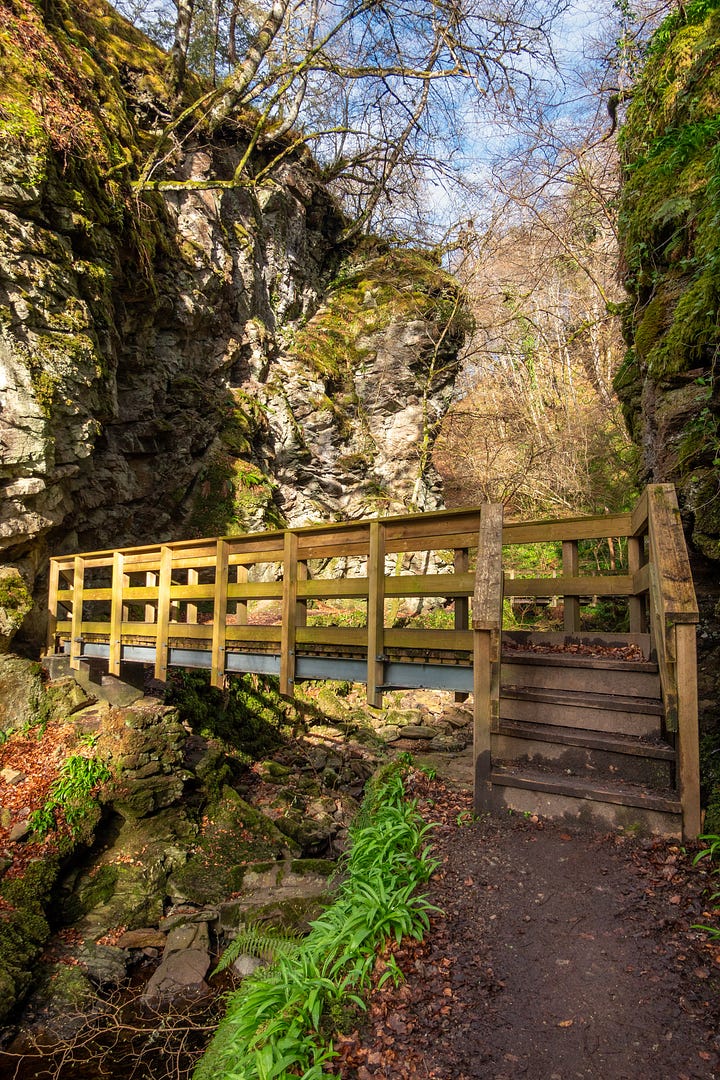
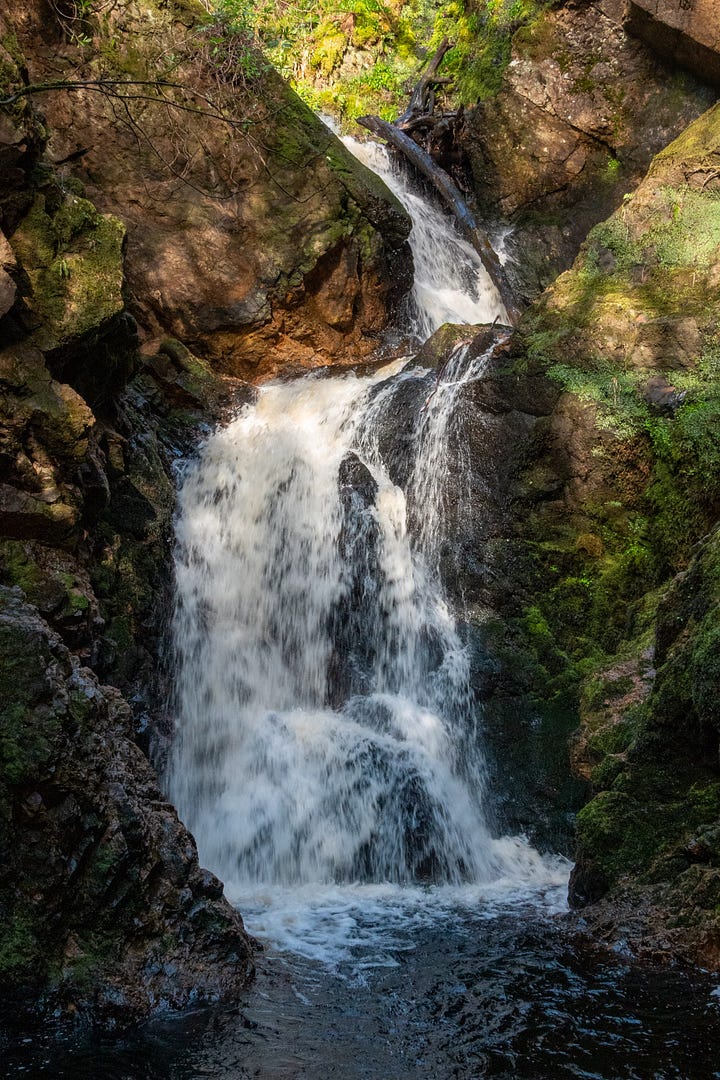
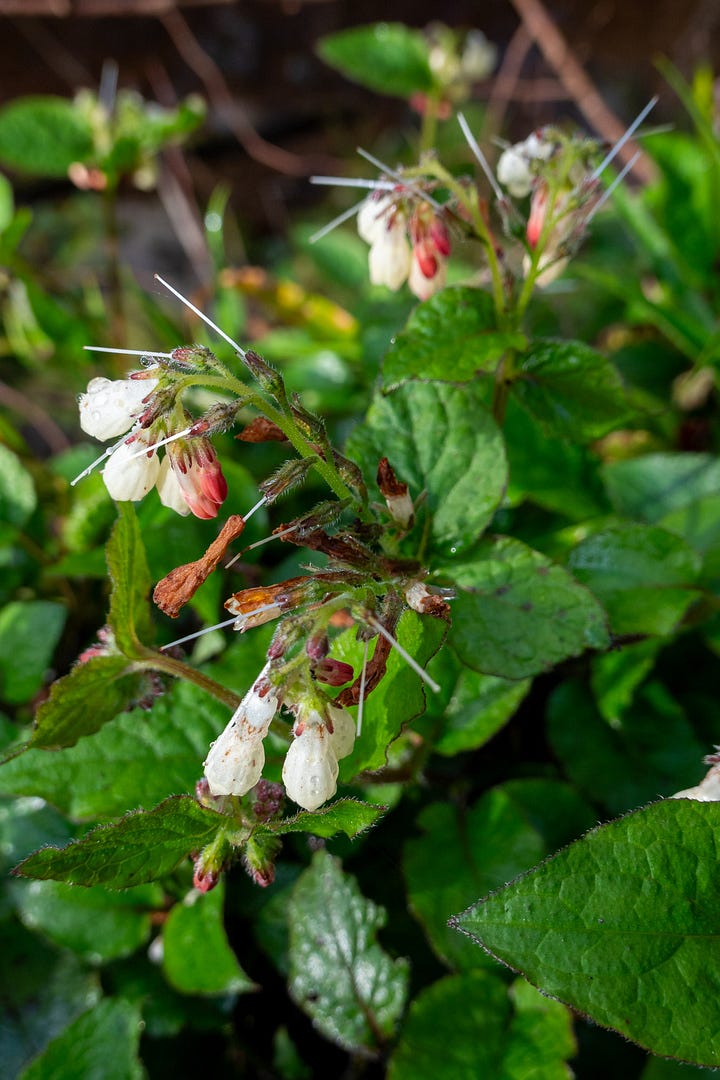
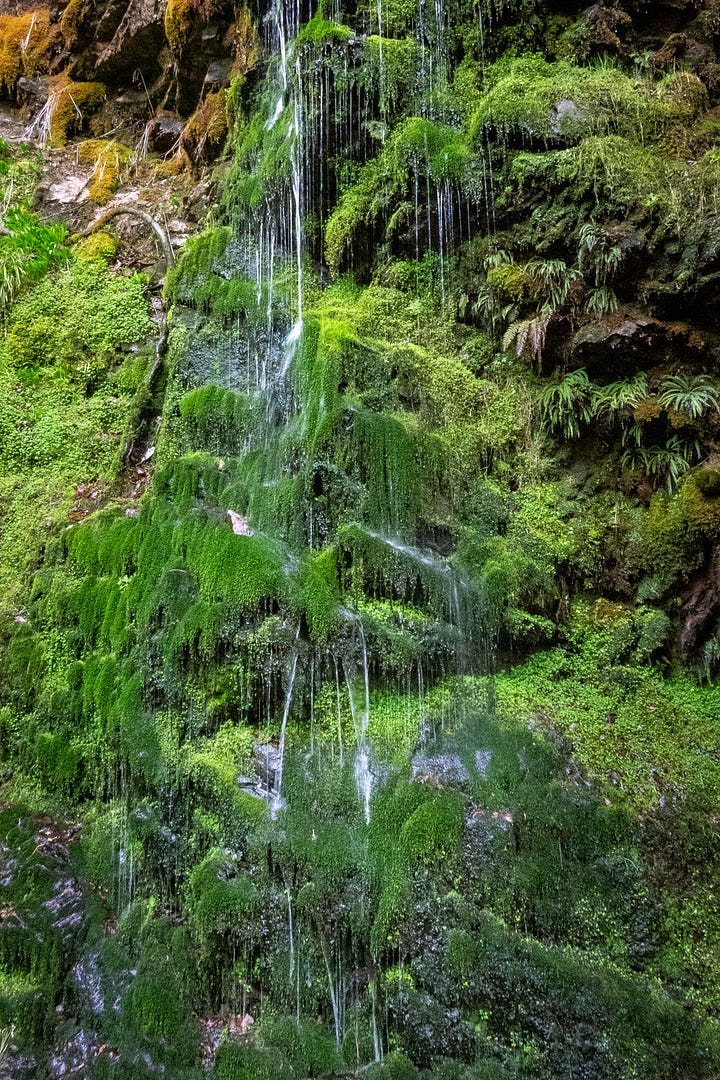
Loch Fleet National Nature Reserve
Just south of Golspie lies the tidal basin of Loch Fleet, designated for its rich marine and bird life and its rare pinewood wildflowers. At dusk then again at dawn I walked down to Littleferry, a stone pier on the narrow channel separating the loch from the sea. A lone heron was fishing. I checked out the possibility of swimming from the sandy beaches on the seaward side, where the water quickly deepens. But warning signs about the currents and a tidal flow that was moving quicker than I could walk soon deterred me.
At low tide much of the seawater drains from the basin, leaving mud flats and sand bars. These were speckled with birds: gulls, curlew, redshank and shelduck, which were particularly visible because of their relatively large size and white, chestnut and dark green colouration.
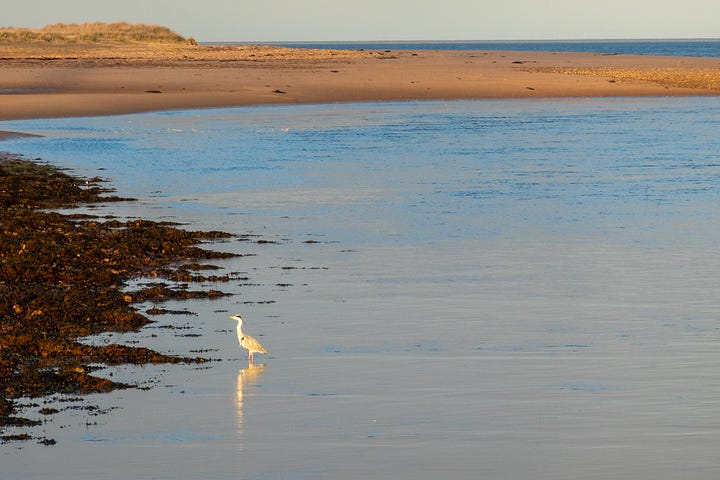

Here I walked in Balblair Wood, a pine plantation growing on sand dunes that have been home to Scots pines for millennia, as evidenced by the pine specialist wildflowers growing here: creeping lady’s-tresses, a British orchid that is almost exclusive to Scotland, pretty pink twinflower and, rarer still, one-flowered wintergreen. It was too early for them to be flowering yet, but when I was here previously in June I searched for and managed to find one-flowered wintergreen in these woods, which are home to more than 90 per cent of the UK’s population of this species.
Pine marten frequent these woods and I saw several of their narrow, blackish spraints, often left prominently in the middle of the path. One of these fascinated me as it contained a scattering of small bones and what appeared to be reptile skin (a snake?). On reflection, I think it was probably fish skin, perhaps from feeding on a dead salmon washed up on the shore.

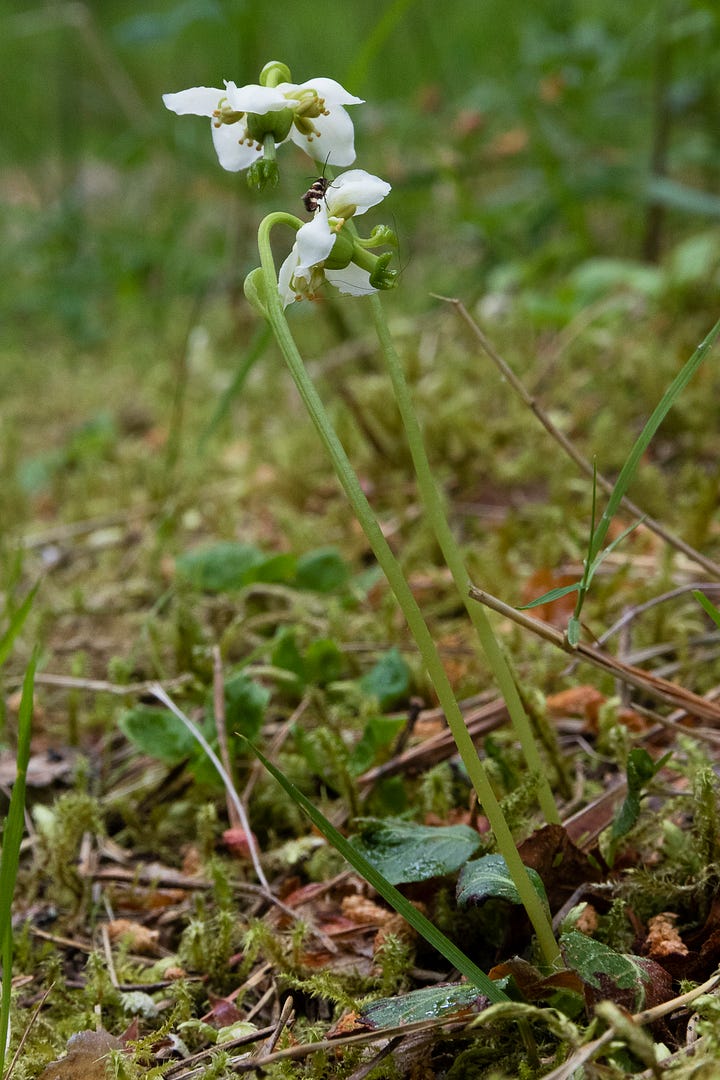
Ledmore & Migdale
This Woodland Trust reserve is further inland, on the Dornoch Firth, the next sea loch south from Loch Fleet. This much larger estuary cuts inland for about 15 miles (24km) and used to be a major obstacle to progress along the coast. Like Loch Fleet, it had a ferry crossing, which has been superseded by a long bridge carrying the A9, the main north road.
The reserve contains a mosaic of different habitats with three Sites of Special Scientific Interest: Migdale pinewood, Spinningdale Bog and Ledmore oakwood, one of the most northerly in the UK. Red squirrels were reintroduced to the pinewoods in 2019. The Scots pines looked magnificent and gorse was in flower, but it was too early for the deciduous trees to be in leaf or for dragonflies to be on the wing. However, I did see my first osprey of 2025, which flew past at eye level as I gazed out from the Spinningdale viewpoint at the east end of the wood.
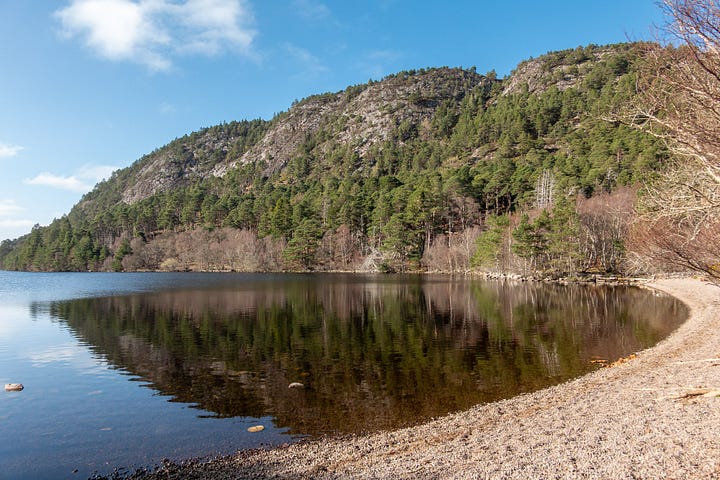
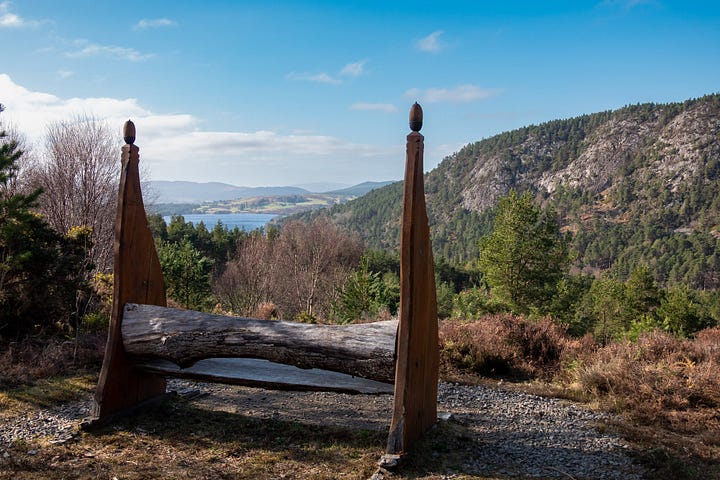
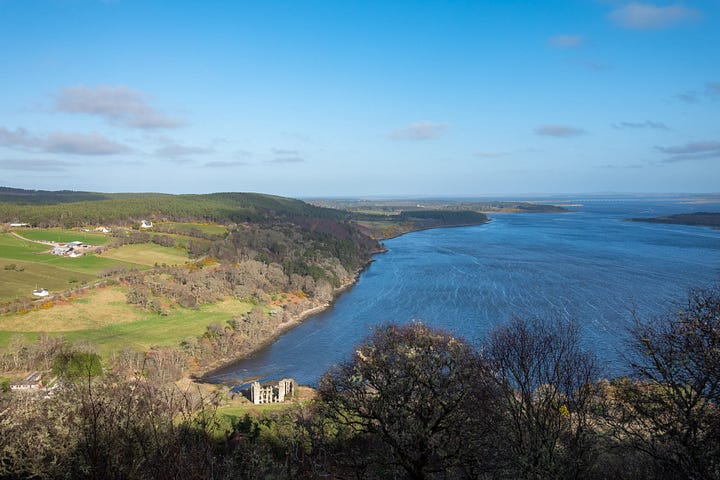
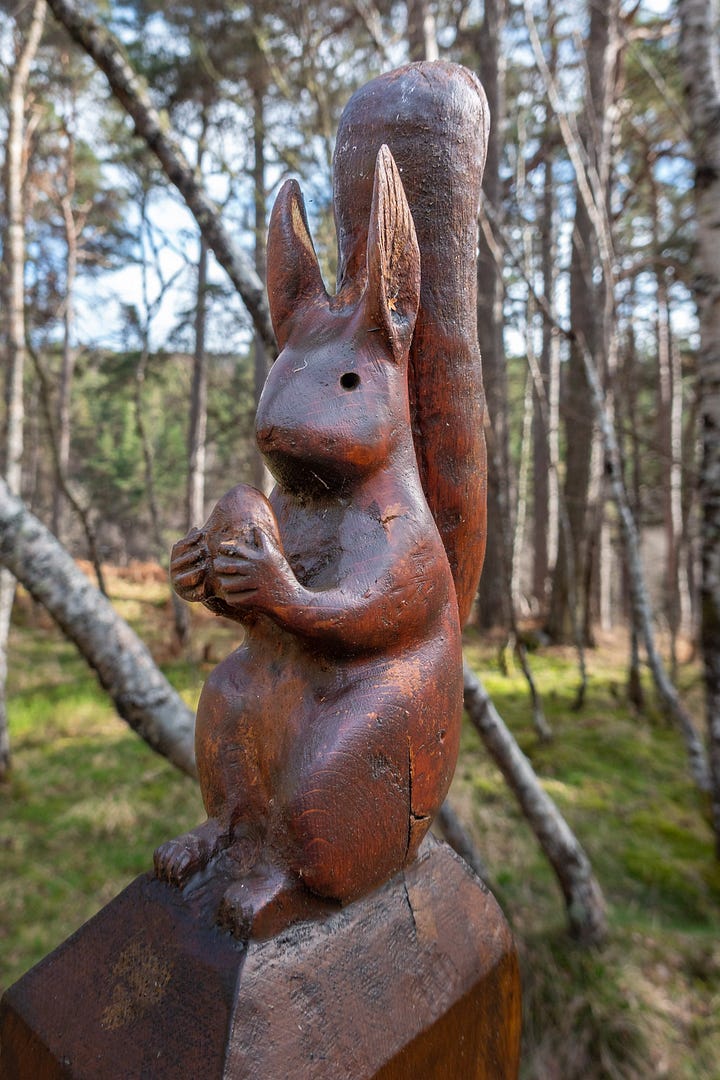
Fyrish Monument
A walk further south took me to another hilltop feature, erected above Alness by General Sir Hector Munro of Novar around 1783. Canmore gives two possible reasons for its construction: as a form of famine relief, by providing employment for destitute men cleared off the land, or as a memorial to his great victory in India, in capturing the Dutch settlement of Negapatam, on which the monument is modelled. However, a local I met by the monument suggested that it was built to commemorate Munro’s son, who was killed by a tiger while hunting in the Bay of Bengal.
No tigers here in Easter Ross, but there was a good spread of juniper on the hillside below the monument. The native coniferous shrub looked a bit winter scorched, but will probably put on new needles as spring warms up. From this viewpoint, overlooking the Cromarty Firth, I could see haar (sea fog) being held back by North and South Sutor, the headlands at its narrow entrance. Sun lit the top of the haar lapping against the far side of the Black Isle, while oil rigs waited in the sea loch off Invergordon to be repurposed for renewable energy schemes.
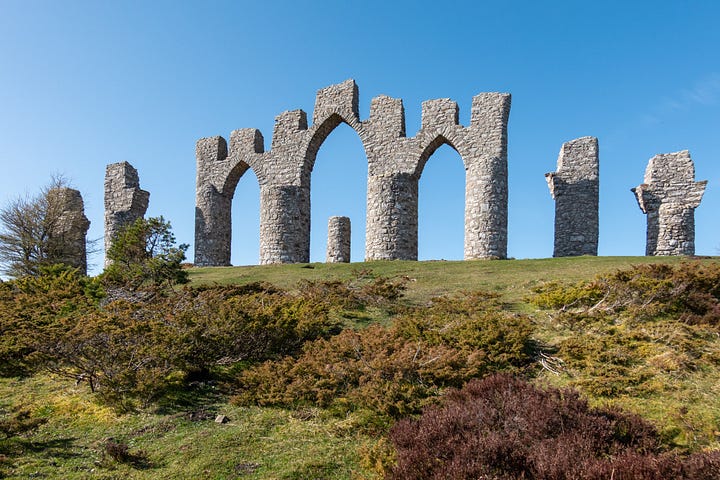
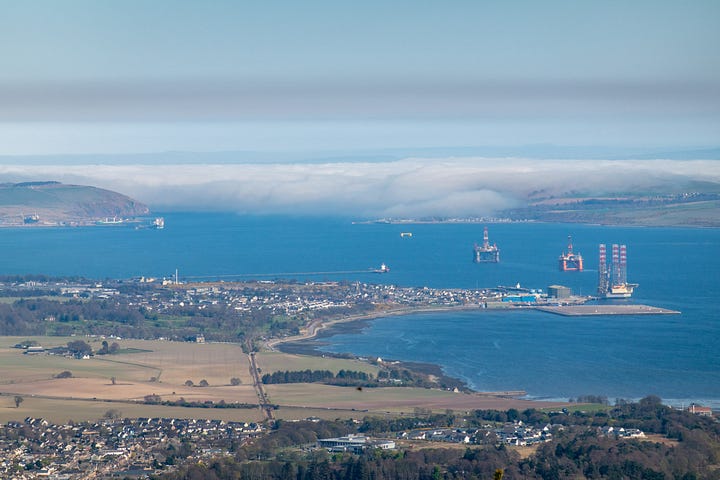
Seaboard villages
The conjoined villages of Hilton, Balintore and Shandwick lie on the east coast of the Fearn peninsula, between the Dornoch and Cromarty Firths. My walk here linked two Pictish carved crosses at either end of the settlement. This area was a Pictish stronghold with many remains that are well interpreted in the Tarbat Discovery Centre at Portmahomack and can be toured around on a Pictish Trail. The hunting scenes on these standing stones show sleek hounds chasing deer. One is a replica and the other, which remains in situ, is protected by a glass structure.
While walking along the shore past well-tended gardens I spotted my first small white butterfly of the year flitting about a shrub. I had a good meal at the Balintore Inn and stayed overnight in their car park, from where I could watch birds on the shingle beach at low tide. As well as herring gulls, oystercatchers and smaller waders, I spotted Sandwich terns on the exposed rocks. I was delighted to see one land with a sand eel in its beak then posture in front of its mate (or potential mate).
My greatest thrill came when swimming from Shandwick Beach at high tide when breaking waves were stirring the sandy sea bed. I was bobbing just beyond the surf line when a tern dived into the sparklingly clear water beside me. Suddenly I was in the midst of plunging terns, who seemed totally unfazed by my presence. It’s a moment that will live with me forever.
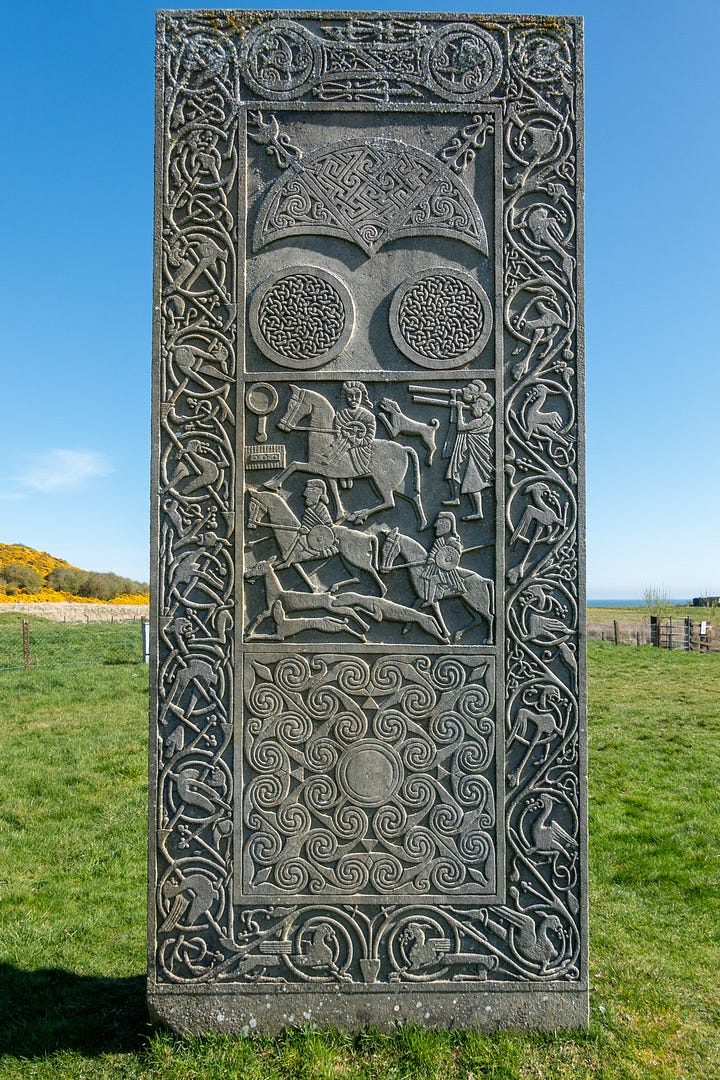
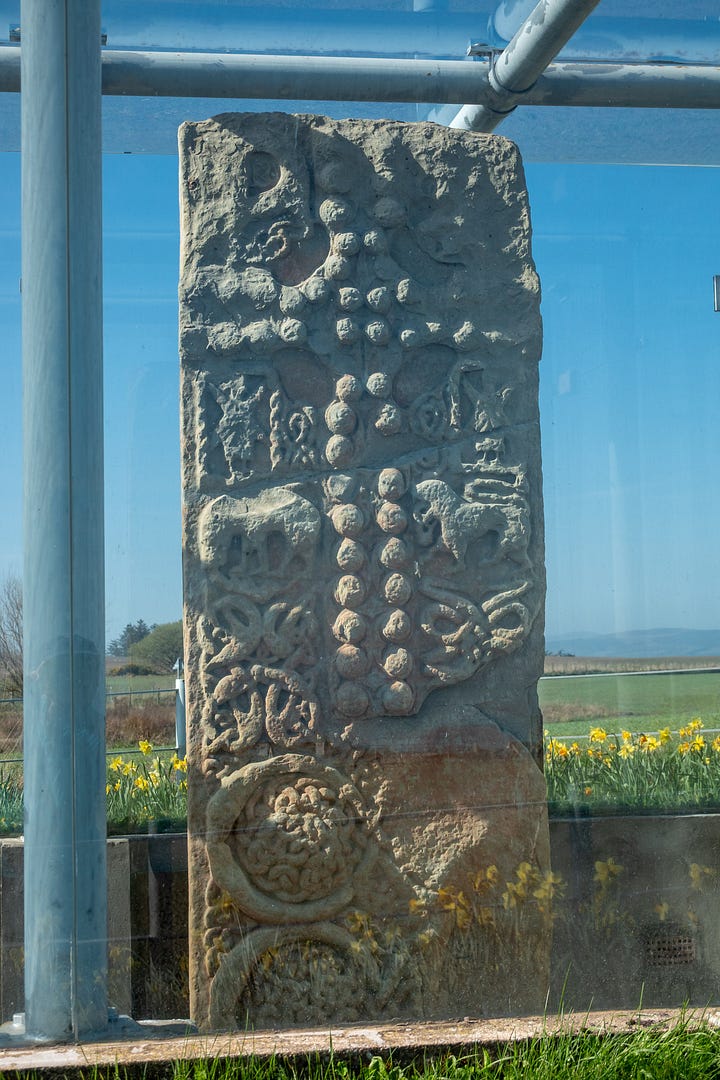
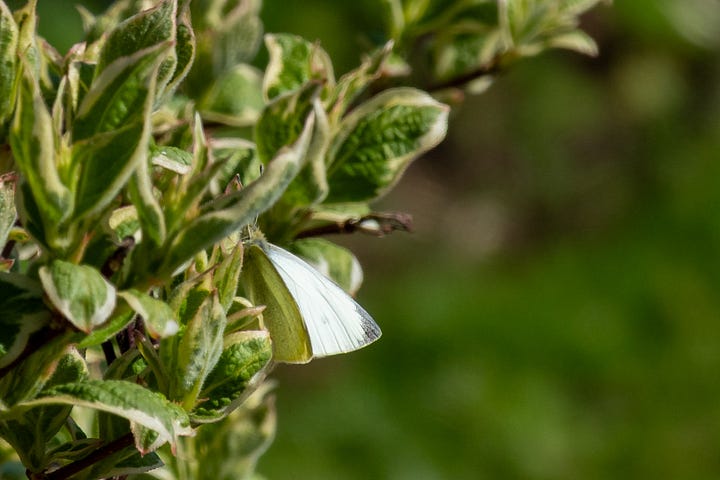



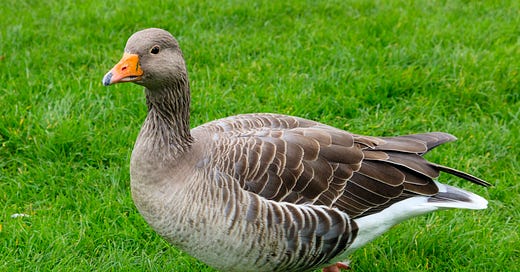




This looks a great area to visit - lots to see and do without being crowded. Love the photos of Loch Fleet :-)
I don't swim, but the experience with the terns sounds magical!
Some favourite walks and places here Felicity, thank you. Loch Fleet is always a good area to see wildlife.